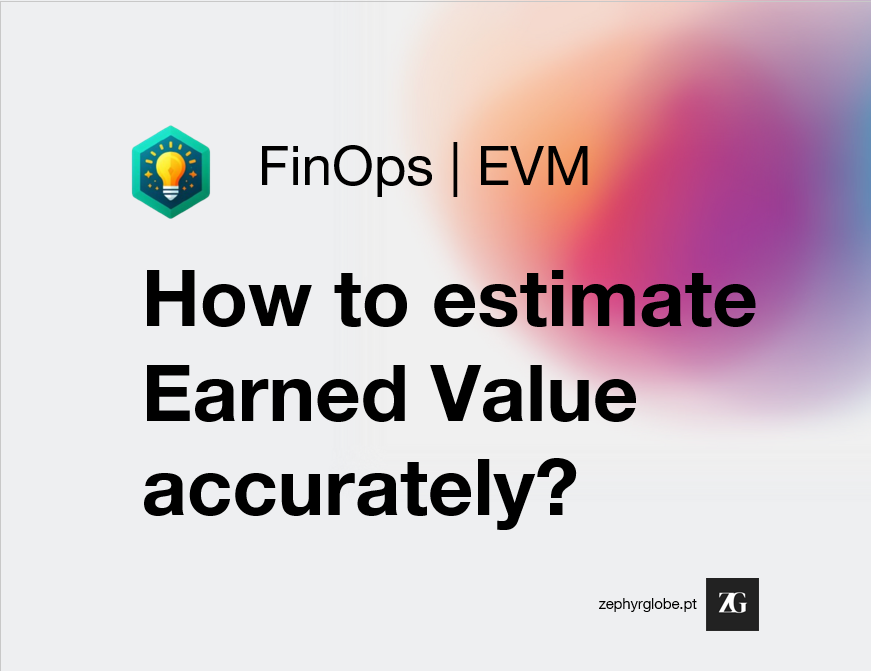I’ve been discussing the adaptation of Earned Value Management (EVM) technique in FinOps, as I firmly believe it has a great use on the Quantify Business Value domain.
Accurate estimation of Earned Value (EV) is essential for effective Earned Value Management (EVM). Let’s break down the steps to estimate EV accurately:
Determine Percent Complete:
- This is the most important part. As seen on my previous article, in this technique, the percent complete will be tied to the Unit Economics.
- A target Unit Economic should be determined in advance. Normally it can be done as part of the budgeting exercise and should be reviewed on a periodic basis.
- Assess the Unit Economic for the reporting period. For more advanced teams, determine the Unit Economic specifically for the team. Determine what percentage compared with the target stablished for the team/product/area/etc. This step provides the foundation for calculating EV.

Planned Value (PV):
- PV represents the planned budget for the work completed up to a specific point in time. It’s the value of work that was scheduled to be done.
- On FinOps context, it is simply the budget amount for any given specific day, on the lowest level available.
Earned Value (EV):
- EV measures the actual value of what has been delivered from products and services on the cloud. It reflects the progress achieved.
- Earned Value (EV) is the result of Planned Value (PV) times %Complete. Remember that both EV and PV are cumulative for the assessing period. By assessing period, we mean the “the cumulative amount until the month we are doing the analysis”. For example, PV of March is the cumulative amount of the 3 first months of the year.

Actual Cost (AC):
- AC represents the actual cost incurred for the assessing period. Obtain this information from cloud billing data.
- AC is the total cost spent up to the current point in time.
- Make sure that AC comes from data that is correctly mapped within your reporting system. Also make sure that the period assessed contain the entire Actual cost, as some costs may take a few days to show on reports.
Cost Variance (CV):
- CV shows whether the project is under or over budget.
- Calculate CV using the formula:
CV = EV – AC
Other Status Indicators:
- Besides SV and CV, consider other indicators:
- Cost Performance Index (CPI): CPI = EV / AC
- Estimate at Completion (EAC): EAC estimates the total cost of budgeting period based on current performance.
- Estimate to Complete (ETC): ETC estimates the remaining cost needed to complete the budgeting period.
- Budget at Completion (BAC): Simply the total cost of the budget period.
- To-Complete Performance Index (TCPI): TCPI = (BAC – EV) / (BAC – AC)
Remember that accurate EV estimation allows project managers to forecast total project cost and completion date based on trend analysis. By mastering these steps, you can confidently embrace the power of Earned Value Analysis in your projects¹². 🌟💡
Disclaimer: The information provided here is for educational purposes only. For specific advice related to your organization’s context, feel free to get in touch. 📊💡
More Links, if you want to go deeper:
(1) Earned Value Management Systems Tool (EVMS) | PMI. https://www.pmi.org/learning/library/earned-value-management-systems-analysis-8026.
(2) The 8 Steps to Earned Value Analysis – ProjectEngineer. https://www.projectengineer.net/the-8-steps-to-earned-value-analysis/.
(3) 6 Techniques for Accurate Project Estimations [2024] • Asana. https://asana.com/resources/project-estimation.
(4) What is an estimation method? 6 techniques for project planning. https://asana.com/resources/estimation-methods.

